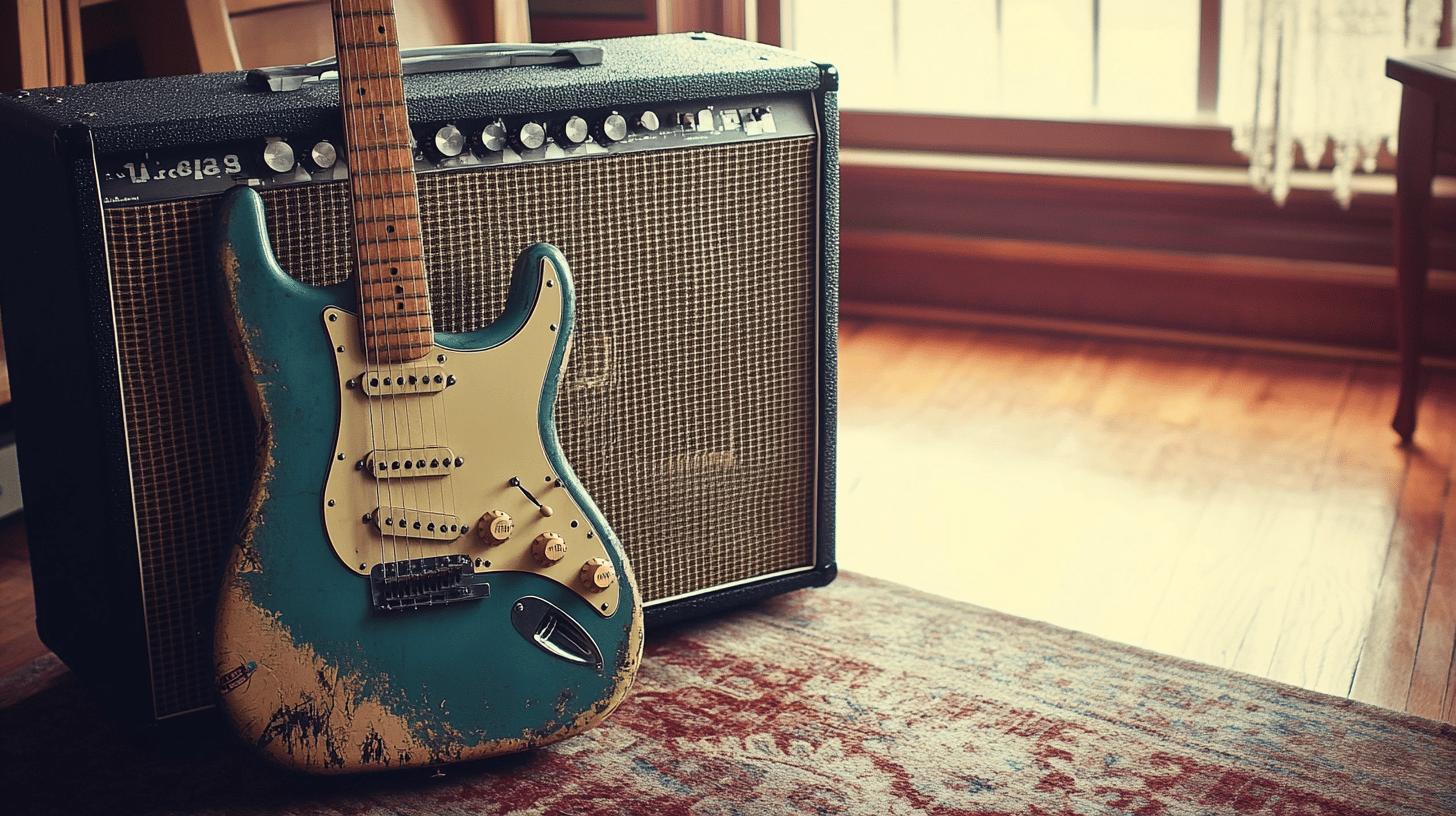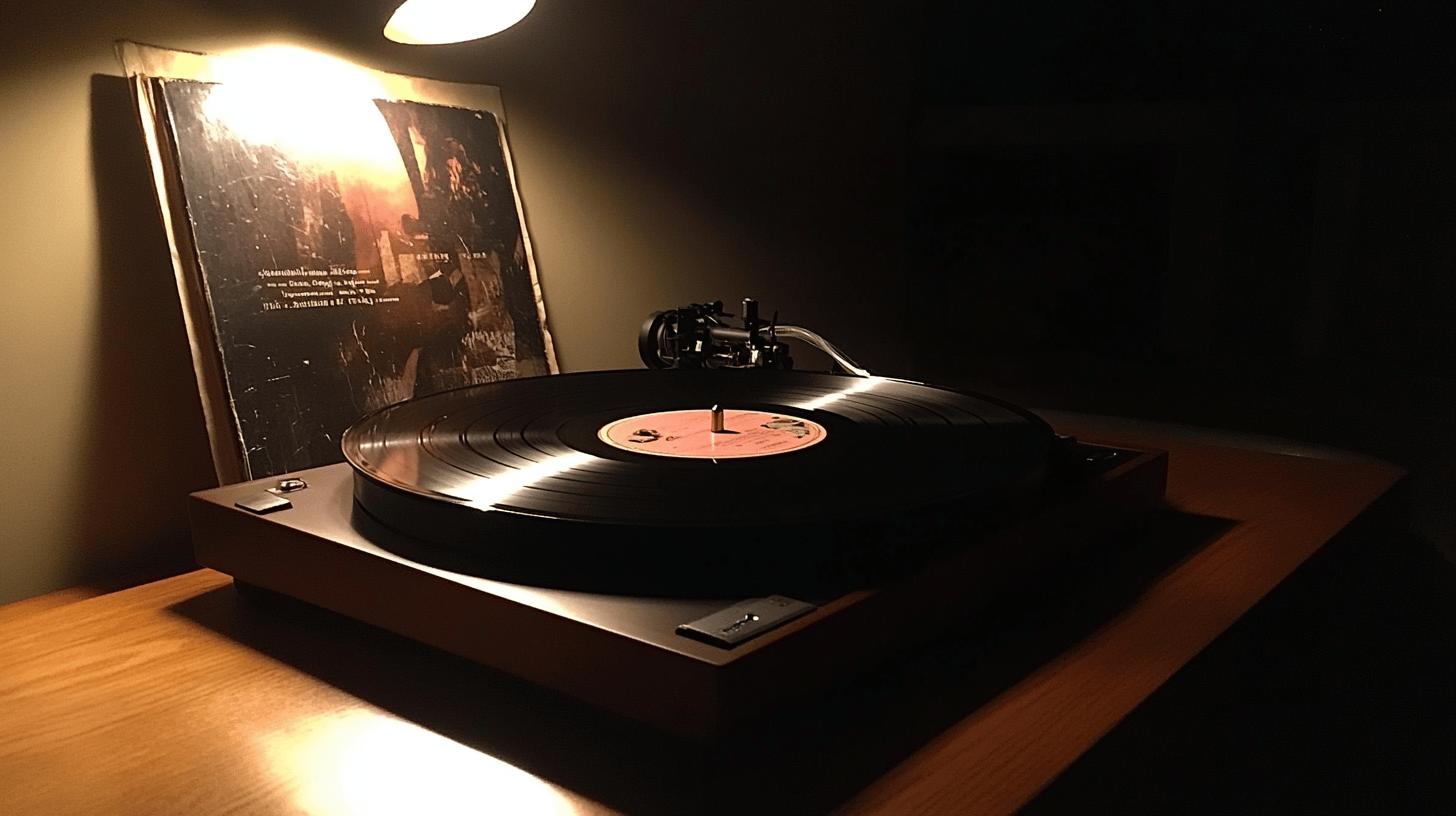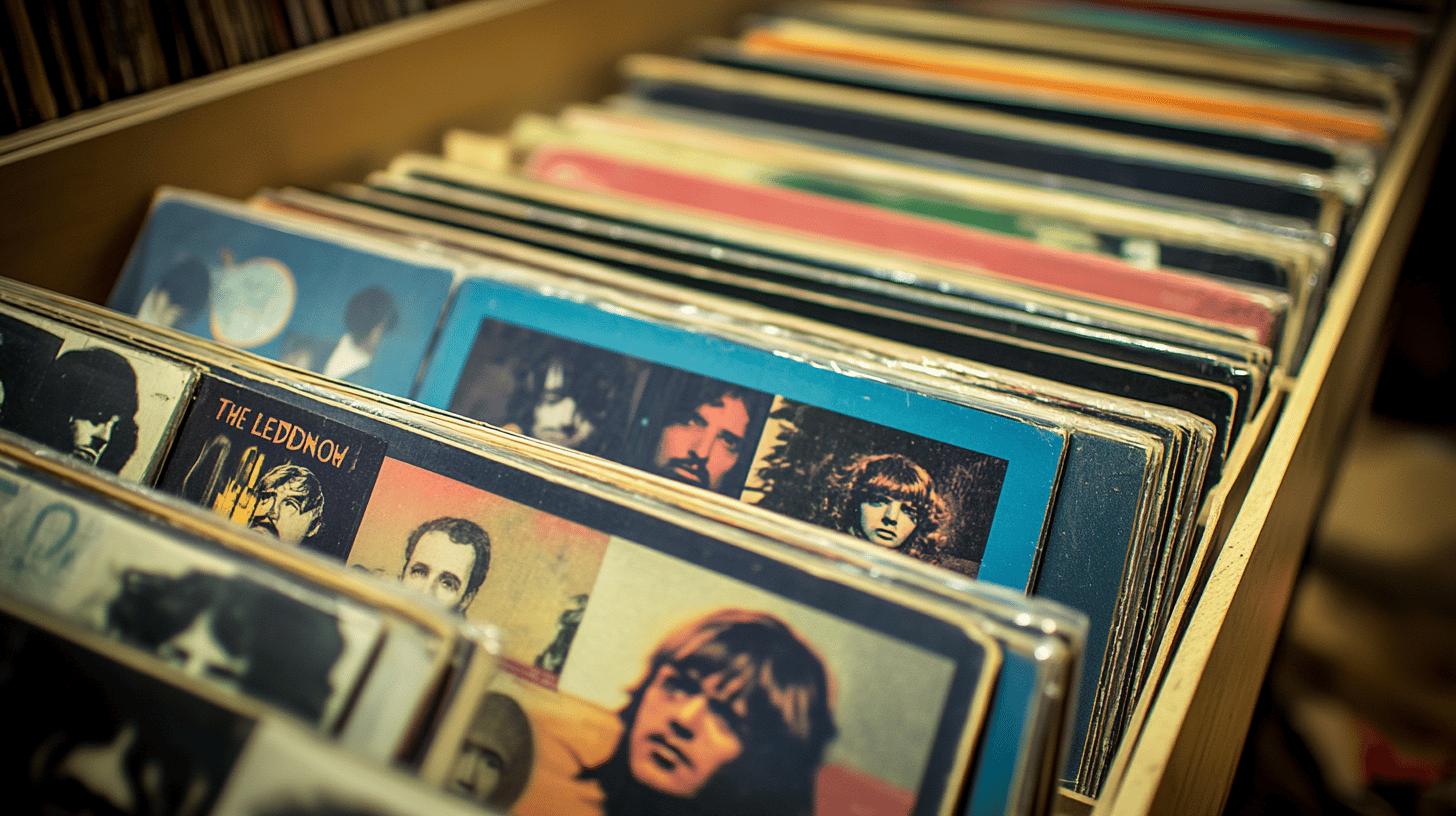Can a single genre capture the spirit of youth and rebellion like rock music does? As the rhythmic backbone of cultural revolutions and social change, rock music has etched itself into history with its bold beats and amplified sounds. This genre’s origins trace back to the 1950s, emerging from the vibrant fusion of African American blues, rhythm and blues, and country music.
Today, we’re exploring what defines rock music: its roots, characteristics, and the cultural impact that still resonates with fans worldwide. Engage with this musical revolution and understand why rock continues to be a powerful emblem of defiance and expression.
Defining Rock Music: Origins and Characteristics

Rock music emerged in the 1950s in the United States, drawing heavily from African American blues, rhythm and blues, and country music. This genre is marked by its strong rhythms and the prominent use of amplified instruments, particularly the electric guitar. As rock music developed, it became a symbol of youth culture and rebellion, gaining significant traction in the UK during the 1960s. Bands such as The Beatles and The Rolling Stones played pivotal roles in popularizing the genre across the globe, profoundly impacting the music scene.
Primary Characteristics of Rock Music:
- Strong rhythms and beats
- Amplified electric instruments, especially electric guitars
- Emphasis on live performance
- Themes of rebellion and youth culture
- Fusion of various musical influences
Culturally, rock music became more than just a genre; it functioned as a powerful vehicle for expressing social and political thoughts. During the tumultuous 1960s and 1970s, it addressed issues like civil rights and the Vietnam War through protest songs. This ability to encapsulate the spirit of the times made rock an influential force beyond entertainment, reaching into the realms of social change and commentary.
Rock music’s connection to youth culture cannot be understated. It represented a break from tradition and authority, resonating with the younger generation’s desire for freedom and self-expression. Its rebellious nature was seen as a form of cultural revolution, challenging societal norms and offering a voice to those seeking change. The genre’s dynamic evolution continues to embody the spirit of innovation and defiance.
The Historical Journey of Rock Music

Rock music traces its origins back to the United States in the 1950s, emerging from a rich tapestry of African American blues, rhythm and blues, and country music influences. The infusion of these genres created a new sound characterized by strong rhythmic patterns and innovative use of electric instruments, particularly the electric guitar.
Early rock and roll artists like Chuck Berry and Little Richard laid the groundwork, infusing their music with energy and distinctiveness that captivated audiences. This nascent period of rock music marked a significant cultural shift, as it began to symbolize a break from traditional norms and resonated deeply with the youth of the time.
The 1960s ushered in the British Invasion, a pivotal era in rock history that saw bands like The Beatles and The Rolling Stones rise to global prominence. These bands not only brought rock music to new heights but also influenced its evolution by experimenting with different styles and lyrical themes.
The Who and Led Zeppelin further pushed the boundaries of rock with their innovative sounds and challenging of musical norms, helping to define the genre’s identity. David Bowie added another dimension with his artistic approach and theatrical performances. These artists contributed to the transformation of rock music into a multifaceted genre, allowing it to adapt and thrive through subsequent decades.
| Year | Artist/Group | Impact |
|---|---|---|
| 1950s | Chuck Berry and Little Richard | Foundation of rock and roll’s sound and style |
| 1960 | The Beatles | Globalization of rock music and cultural influence |
| 1964 | The Rolling Stones | Reinforcement of rock’s rebellious nature |
| 1965 | The Who | Innovation in sound and stage performance |
| 1969 | Led Zeppelin | Development of hard rock and heavy metal elements |
| 1970s | David Bowie | Expansion of rock’s artistic and theatrical scope |
Exploring Subgenres of Rock Music

Rock music, with its diverse range of styles and influences, has birthed numerous subgenres. Each subgenre carries its own unique characteristics and has contributed to the evolution of rock music as a whole. From the enduring appeal of classic rock to the aggressive energy of punk, the eclectic nature of rock continues to inspire musicians and captivate audiences worldwide.
Classic Rock
What defines classic rock? Classic rock is characterized by its timeless appeal and the iconic bands that have shaped its history. Bands like Led Zeppelin, Queen, and The Rolling Stones epitomize this subgenre with their powerful performances, memorable melodies, and innovative approaches to music. Classic rock has a broad appeal, maintaining its popularity across generations due to its foundational role in establishing the rock genre’s sound and ethos.
Punk Rock
How does punk rock differ from other subgenres? Punk rock is known for its aggressive, rebellious nature and cultural significance. Emerging in the mid-1970s, punk rock bands like The Ramones and The Sex Pistols challenged musical conventions with their raw sound and confrontational lyrics. This subgenre became a pivotal cultural movement, symbolizing defiance and counterculture, and continues to influence modern music and fashion.
Grunge
Where did grunge originate, and what impact did it have? Grunge originated in Seattle in the late 1980s and early 1990s, becoming synonymous with bands like Nirvana and Pearl Jam. This subgenre is marked by its gritty sound, characterized by heavy guitar distortion and introspective lyrics. Grunge’s impact was profound, shaping the 1990s music scene and bringing alternative rock into the mainstream spotlight.
Alternative Rock
What makes alternative rock unique? Alternative rock is distinguished by its versatility and experimentation with sound. Encompassing a broad range of styles, this subgenre includes bands like Radiohead and R.E.M., known for pushing musical boundaries and exploring diverse soundscapes. Alternative rock’s ability to fuse various influences makes it a continually evolving and dynamic aspect of the rock music landscape.
Main Attributes of Each Subgenre:
- Classic Rock: Timeless appeal, iconic bands
- Punk Rock: Aggressive, rebellious nature
- Grunge: Seattle origins, introspective lyrics
- Alternative Rock: Versatility, experimental sound
- Eclectic Influences: Diverse musical inspirations across subgenres
Influential Rock Artists and Bands

Who were the trailblazers in rock music’s formative years? Early influential artists like Elvis Presley, Chuck Berry, and Little Richard laid the groundwork for what would become a global phenomenon.
Elvis, often hailed as the “King of Rock and Roll,” brought rock music into the mainstream with his charismatic performances and hit records. Chuck Berry’s innovative guitar riffs and storytelling lyrics set the standard for future rock musicians, while Little Richard’s flamboyant style and energetic performances helped define the genre’s rebellious spirit. Together, these pioneers crafted a new musical landscape that resonated with the youth of their time, setting the stage for the rock revolution.
Which modern and legendary artists continue to shape the genre? Bands and musicians such as The Beatles, The Rolling Stones, Queen, and Led Zeppelin have left indelible marks on the rock music scene. The Beatles revolutionized music with their innovative songwriting and studio experimentation, while The Rolling Stones embodied the rebellious essence of rock with their gritty sound and enduring stage presence.
Queen, led by the incomparable Freddie Mercury, pushed musical boundaries with their theatrical style and eclectic compositions. Led Zeppelin’s fusion of hard rock and blues influences introduced a heavier sound that inspired countless other rock subgenres. These artists have not only defined rock music but have also influenced countless musicians across the globe.
6 Influential Rock Artists/Bands:
- Elvis Presley
- Chuck Berry
- The Beatles
- The Rolling Stones
- Queen
- Led Zeppelin
The Cultural Impact and Legacy of Rock Music

How has rock music influenced social and political movements? Rock music has played a pivotal role in social and political commentary, providing a powerful platform for addressing pressing issues such as war and civil rights. Iconic protest songs, like Bob Dylan’s “Blowin’ in the Wind” and John Lennon’s “Imagine,” have become anthems for peace and social justice.
These songs not only captured the spirit of their times but also inspired generations to engage with societal challenges. The genre’s ability to convey complex messages through compelling lyrics and emotive performances has cemented its place as a catalyst for change, influencing political discourse and activism.
What is the lasting legacy of rock music in modern culture? Rock music’s legacy is deeply intertwined with youth culture, symbolizing rebellion, self-expression, and the quest for identity. From the rebellious energy of punk rock to the introspective lyrics of grunge, rock has provided a voice for the youth, challenging societal norms and advocating for freedom.
The debate over whether rock and roll is dying continues, yet the genre’s evolution and the success of contemporary bands like Foo Fighters and Arctic Monkeys suggest its enduring relevance. Festivals like Glastonbury and Coachella showcase rock’s vibrant presence, drawing diverse audiences and highlighting its adaptability in a changing musical landscape.
| Impact Area | Description |
|---|---|
| Social Change | Rock addresses issues like civil rights and war through protest songs. |
| Youth Culture | Symbolizes rebellion and self-expression, challenging societal norms. |
| Political Activism | Inspires engagement with political and social movements. |
| Modern Relevance | Continues to evolve with contemporary bands, maintaining cultural influence. |
Final Words
Grasping what is rock music involves understanding its rich history, distinct characteristics, and cultural significance. The genre evolved from its American roots in the 1950s, becoming a global icon of youth and rebellion.
Spanning numerous subgenres, rock music remains a dynamic force in the music world. The enduring influence of legendary artists ensures that rock will continue to inspire and challenge societal norms for generations to come. Stay engaged with the ever-evolving soundscapes rock music offers.
FAQ
What is rock music called?
Rock music is often called “rock and roll,” a genre originating in the 1950s. Characterized by strong rhythms and amplified instruments, it symbolizes youth culture and rebellion.
What defines rock music?
Rock music is defined by its strong rhythm, amplified instruments, and focus on the electric guitar. It often includes expressive vocals and energetic performances.
What identifies as rock music?
Songs with strong beats, electric guitar riffs, and elements of blues and jazz are identified as rock music. It also includes stylistic traits that evoke energy and rebellion.
What is considered a rock song?
A rock song typically features an electric guitar, prominent rhythm section, and dynamic vocals. It often conveys themes of youth, rebellion, or emotion.
Five characteristics of rock music?
- Strong and steady rhythm
- Amplified instruments
- Focus on electric guitar
- Energetic vocals
- Themes of rebellion
What is rock music Wikipedia?
Wikipedia defines rock music as a broad genre, characterized by its roots in 1950s rock and roll and incorporation of various musical styles over time.
What does rock music do to the brain?
Listening to rock music can stimulate brain activity by triggering emotions and enhancing creativity. Its rhythmic patterns often boost mood and energy levels.
History of rock music?
Rock music began in the 1950s, influenced by blues and country music. It flourished in the 1960s with influential bands like The Beatles and The Rolling Stones.
What is rock music artists?
Rock music artists include legendary performers like The Beatles, Led Zeppelin, and Queen, known for shaping the genre and leaving a lasting cultural impact.
What is rock music examples?
Examples of rock music include “Stairway to Heaven” by Led Zeppelin, “Bohemian Rhapsody” by Queen, and “Hotel California” by The Eagles.
Rock bands?
Famous rock bands include The Beatles, The Rolling Stones, Queen, Led Zeppelin, and The Who, who each contributed to the evolution of rock music.

